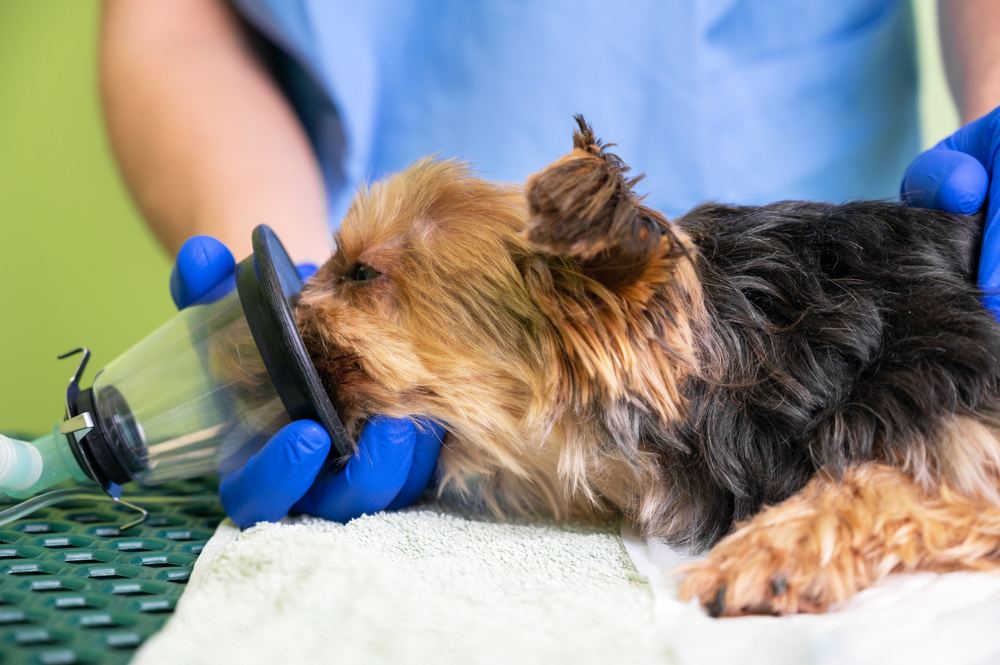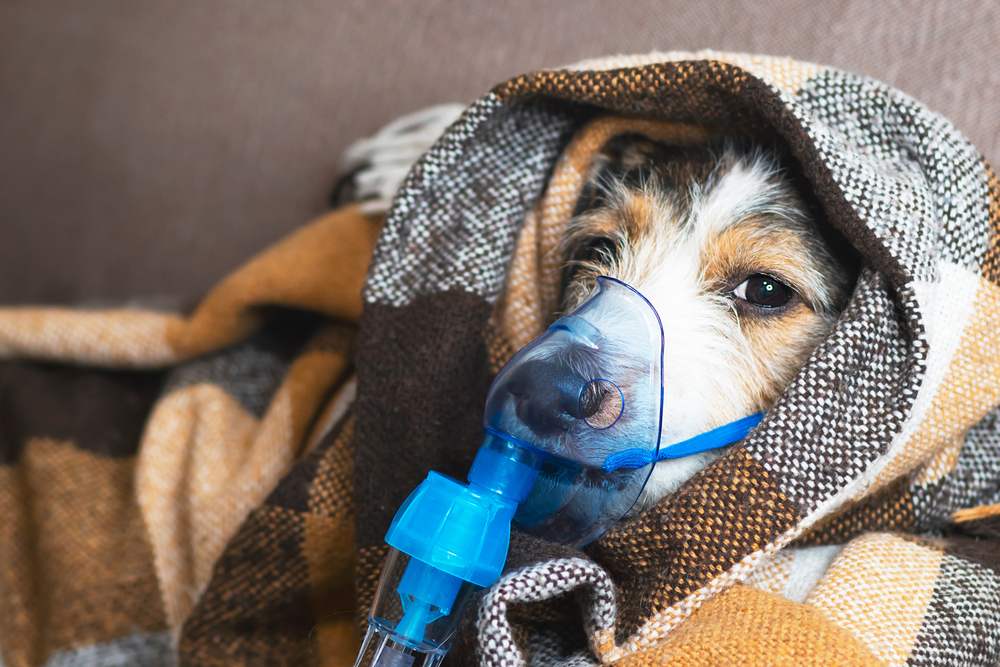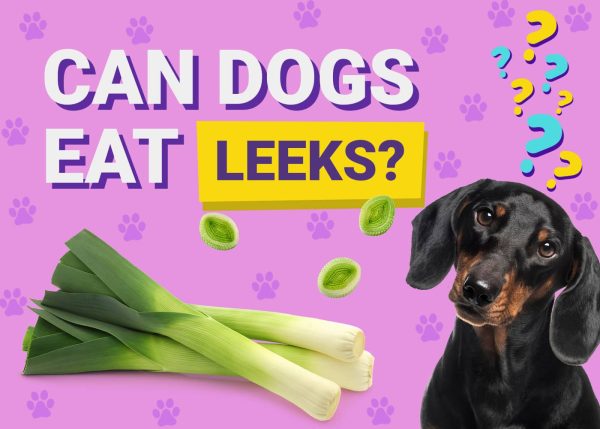In this article
View 4 More +Oxygen therapy, or at-home oxygen supplies, is fairly common for humans. Many people have oxygen if they have chronic conditions such as COPD, heart disease, or even cancer. Our dogs can also get some of the same or similar diseases to humans, with some patients benefiting from the use of oxygen. Many people may wonder why and if there is a way to provide oxygen therapy for their dogs at home. However, the logistics and practicality of providing oxygen therapy at home for dogs is much more complicated than it may seem on the surface. Let’s discuss what oxygen therapy is, and why it’s much easier to provide this care in-hospital than at home.

What Is Oxygen Therapy for Dogs?
When medical professionals refer to oxygen therapy, we are referring to supplementing oxygen in medical cases where the respiratory tract and/or oxygen carrying capacity of the body is compromised. A blood-oxygen level that is too low is called hypoxia, and can occur from a number of medical conditions.
Most people will think of pets suffering from heart failure who may have fluid in or around their lungs, or perhaps metastatic cancer that has spread to the lungs. In both of these cases, the lungs are not able to function normally or provide appropriate oxygen to the rest of the body. Therefore, dogs are either put into an oxygen cage or have oxygen provided to them to help support their decreased lung function.
Other dogs may have compromised ability to circulate oxygen. In mammals, the red blood cells carry oxygen molecules around the body to the different organs, helping to provide life-essential oxygen to the entire body. If your dog has decreased red blood cells (known as anemia) for any number of reasons, then providing supplemental oxygen may help their overall health. However, it’s important to know that your dog will also need to be treated for the underlying cause of their anemia to receive the best care and have the best chance at recovery.

How Is Oxygen Therapy Given?
In hospitals, there are two main ways of providing oxygen to pets. The first is by an oxygen cage (e.g., a dog oxygen chamber). The second is providing oxygen to the face.
An oxygen cage is a cage fitted with (typically) plexiglass doors with vents. Your dog is placed inside and oxygen is pumped into the cage at an increased percentage than regular room air. This allows your dog to breathe the air within the cage that contains a higher oxygen percentage than they would without this therapy.
The other way to provide oxygen therapy is to your dog’s face. This is typically by fitted nostril oxygen cannulas, or cannulas that are sutured into the nose. However, if your dog has a flat face, then your veterinarian may be able to fit them with an e-collar that goes around their head and is partially covered. An oxygen tube is then run into the collar so that oxygen can be provided that way.
Oxygen therapy can also be provided by intubation, or placement of a tube into your dog’s trachea to provide oxygen. In these cases, your dog needs to be kept under appropriate anesthesia and monitoring to provide oxygen care. These are typically very ill and/or compromised patients.
What Happens if You Miss a Dose?
Oxygen is required for life in all mammals. Your dog will need to have an appropriate amount of oxygen every single minute of every day not only in order to be comfortable, but also to survive. If your dog has a disease that compromises their oxygen levels, it’s important for them to receive appropriate amounts of oxygen through providing them oxygen therapy.
Unfortunately, providing oxygen therapy to dogs is not easy at home. The cages used in-hospital are large, expensive, and cumbersome. It’s not practical for people to have a hospital-grade oxygen cage at home. As far as people providing oxygen by the face, most dogs won’t tolerate the nasal cannulas. In addition, if your dog is walking around the house, the logistics of pulling an oxygen tank or container may be difficult. Even in the hospital, many dogs are not amenable to oxygen therapy, and may need sedatives in order to not be stressed and uncomfortable.

Potential Side Effects of Oxygen Therapy
Oxygen poisoning is theoretically possible, but extremely rare. In more than 15 years of veterinary medicine I’ve never seen it, nor have any colleagues seen it either. So please don’t be worried about your veterinarian providing too much oxygen
However, with that said, the biggest side effect of providing oxygen therapy for your dog at home is the logistics of it. As discussed above, many dogs will not tolerate having cannulas within their noses and/or attached to their faces. Even if your dog would tolerate the e-collar oxygen method, they would not be able to move anywhere as the portable tank would have to be attached to them somehow. Portable tanks are heavy for people to move, not to mention a dog. Oxygen cages are absolutely unrealistic to keep in a house.
Realistically, providing oxygen therapy in the house is not feasible. If your dog is sick and/or unstable enough to require oxygen therapy, we strongly recommend that they stay in the hospital. Therefore, the biggest side effect to oxygen therapy at home is that it’s not recommended. Oxygen therapy in a veterinary hospital will need to be provided under direct supervision of a licensed veterinarian and their staff.

Frequently Asked Questions (FAQ)
How Long Will My Dog Require Oxygen Therapy?
This completely depends on the disease and situation. If your dog requires oxygen therapy because they are in active congestive heart failure, and/or anemic, they may only require oxygen for a few hours or days until their condition stabilizes. However, if your dog has a chronic condition requiring oxygen therapy such as cancer, then providing 24/7 oxygen therapy for the remainder of your dog’s life may not be practical, or humane. Speak to your veterinarian about the reality of your pet’s specific condition.
If you need to speak with a vet but can't get to one, head over to PangoVet. It's an online service where you can talk to a vet online and get the personalized advice you need for your pet — all at an affordable price!
Why Is Oxygen Therapy So Expensive at a Veterinary Hospital?
This is because the pets who require oxygen therapy are often some of the most sick and unstable. Not only do the pets typically require oxygen therapy, but they also require aggressive medications and nursing care. In addition, these pets are in the top tiers of our veterinary ICUs. So, while the oxygen itself may not be expensive to supply, the entire disease process and hospital care for your pet is likely much more complicated than just providing oxygen.

Conclusion
Oxygen therapy is a way to provide supplemental oxygen to a dog that has an acute or chronic condition that decreases their blood oxygen levels. Commonly we see this in dogs with heart failure, cancer, collapsing tracheas, or even brachycephalic syndrome. Oxygen therapy is provided at levels above room air until your dog has stabilized.
In chronic conditions such as cancer, providing oxygen will likely only help for short periods of time. As soon as the oxygen is removed, the cancer will still remain in the lungs.
Oxygen therapy is best provided in a veterinary hospital setting, as the logistics and reality of providing oxygen therapy at home is not realistic. Unfortunately, many dogs that require oxygen therapy are very ill and/or unstable. Speaking to your veterinarian about the reality of your dog’s condition and specific disease is always recommended before providing oxygen therapy.
Featured Image Credit: Daria Lixovetckay, Shutterstock



















2 Responses
thanks for info.
Thanks for reading, Liana. We're glad we could help. 🙂